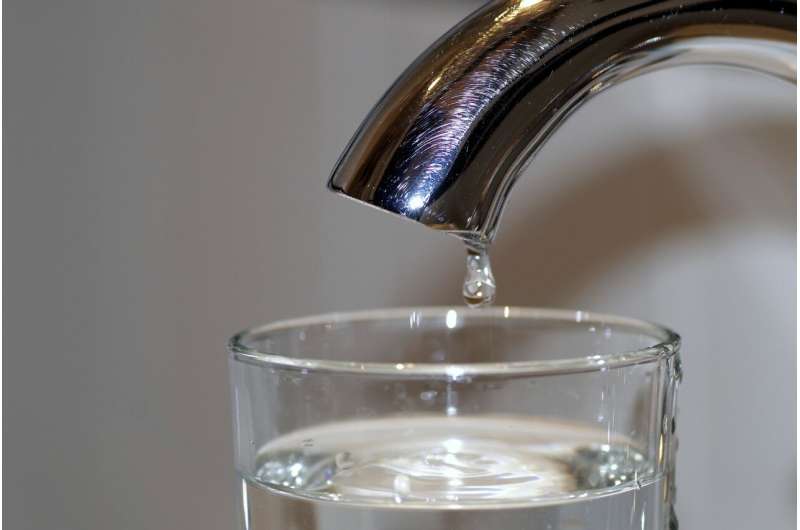

More American cities—even those seen as affluent—are home to people living without running water as people are being “squeezed” by unaffordable housing and the cost-of-living crisis, new research finds.
Published in Nature Cities, the study revealed the problem worsened following changes to the housing market triggered by the 2008 global crash. And since 2017, it has been “expanding in scope and severity” to affect a broader array of US cities including Portland (OR), Phoenix, Houston, Atlanta, Dallas-Fort Worth, and Philadelphia, as well as large urban areas such as Los Angeles, New York City and San Francisco.
The research also found that people of color were disproportionally affected by a lack of household water, a situation defined by the authors as “plumbing poverty,” in 12 of the 15 largest cities.
The researchers from King’s College London and the University of Arizona said the findings should “raise alarm bells” and warned it would take a “heroic” transformation of housing conditions and social infrastructures for the U.S. to meet the United Nations goal for everyone to have access to safe drinking water, sanitation and hygiene.
Lead researcher Professor Katie Meehan, Professor of Environmental Justice at King’s College London, UK, said, “It is alarming how many US cities, including those thought of as affluent and growing, are now home to more people living in situations of extreme poverty, namely without access to running water.
“Our research is the first effort to track these changes over time, starting in the 1970s and noting a dramatic urbanization of plumbing poverty in the 1990s and sharp acceleration triggered by the 2008 crash and the current housing and cost-of-living crisis.
“The compound pressures of high housing costs and expenditures mean that more low-income, asset-limited people are living without running water in these expensive cities. Far too many people, especially those of color, are now in such extreme poverty they are being pushed into homes that do not meet the basic standard for human dignity and life.”
Meehan said people can find themselves living without running water for a range of reasons and, in most cases, people are working but not earning enough to make ends meet. Some households might have been disconnected from water service after falling behind with bills or had to “downgrade” to housing without any water access because other expenses take priority. Others might be in homes which have been poorly maintained by their landlord but cannot afford to move out, some might be living in buildings such as sheds or warehouses not designed to be homes, while others could be experiencing homelessness.
Lucy Everitt, a Ph.D. student at King’s College London who was part of the research team, said water service shut-offs are a hidden problem across US cities that may be indirectly picked up by US census data.
“New York City tops the ‘worst offenders’ list for the total number of households in a US metro without running water. Despite this, the municipal Water Board issued more than 2,400 shutoff notices in March of this year alone to properties behind in their payments. Because our analysis tracks the status of running water in households, as measured by the US Census, we anticipate that we are capturing many thousands of households whose access is denied by their inability to pay.”
The study is the first to track the problem over a 51-year period in the 50 largest US cities. In the 1970s, according to census data, 3.5 million US households lacked running water and by 2021 this overall number had reduced, but 0.5 million households or 1.1million people still lacked household access to running water. This is equivalent to one out of 245 households live without running water. The team believe this is likely to be an underestimate of the true number because of limitations in US census data.
Other key findings from the study include:
- From 1990, plumbing poverty shifted from being a mainly rural to urban issue and latest figures show 71 percent of those in plumbing poverty now live in cities.
- In 2021, the New York City metro area led the nation in the number of people living in plumbing poverty—a staggering 56,900 people—followed by Los Angeles (45,900 people) and San Francisco (24,400 people).
- People of color represent the majority of individuals without access to running water in 12 of the 15 largest US cities, including Los Angeles (82%), Miami (79%), San Francisco (74%), and Houston (71%) in 2021.
Dr. Jason R. Jurjevich, Assistant Professor in the School of Geography, Development and Environment at the University of Arizona who was part of the research team, said, “Our results underscore that the success in reducing plumbing poverty in select US cities over the past twenty years is uneven, with households of color often left behind. In Philadelphia, for example, people of color comprised 40% of the total population, but represented 66% of people without access to running water in 2021.”
The authors said not enough attention is being given to how the housing crisis is shaping people’s access to running water. They recommend reform and improvements to the US Census Bureau’s capacity to collect nationwide data about household water access and the extent of water service shut-offs, to monitor and meet SDG development goals.
They also said local water utilities and water boards must revisit and overhaul low-income assistance programs in light of the expanding cost-of-living and housing expenses, which are “squeezing” people’s ability to pay for water services.
More information:
Urban inequality, the housing crisis and deteriorating water access in US cities, Nature Cities (2024). DOI: 10.1038/s44284-024-00180-z
Provided by
King’s College London
Citation:
Plumbing poverty: More people living without running water in US cities since global financial crisis (2024, December 19)
retrieved 19 December 2024
from https://phys.org/news/2024-12-plumbing-poverty-people-cities-global.html
This document is subject to copyright. Apart from any fair dealing for the purpose of private study or research, no
part may be reproduced without the written permission. The content is provided for information purposes only.



